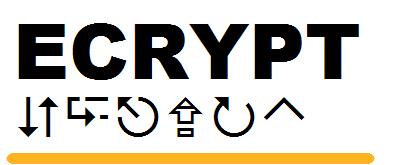Working Groups
There are four Working Groups within WAVILA.
- WVL1: Theoretical analysis of watermarking security The objective of WVL1 is to establish a formal model for watermarking schemes and provide the theoretical bases for practical implementations. To achieve this goal, WVL1 will enhance the interaction between European researchers and integrate their results in the theoretical analysis of watermarking security, including asymmetric and zero-knowledge techniques. The different partners of WVL1 will take into account the results achieved during the first two years, especially those topics that have led to the deliverable D.WVL.1.
- WVL2: Development of practical systems The objective of WVL2 is to bridge the theoretical security definitions and developments obtained in the scope of WVL1 with the real practical systems in the chosen applications. Therefore the goals of WVL2 are: i) to measure the security of practical systems and to establish corresponding gaps to the theoretical bounds determined in WVL1, ii) to design new attacks that get closer to the limits of optimal attacks as outlined inWVL1, iii) to investigate the existence of new classes of attacks not encompassed by theory, iv) to improve the security of practical watermarking systems by the light of the theoretical analysis.
- WVL3: Benchmarking The objective of WVL3 is to investigate benchmarking methods and tools for digital watermarks, steganographic systems (steganalysis) and perceptual hashes. The focus is on the development of benchmarking tools and the evaluation of selected algorithms for image, video and audio data. Application scenarios have specific requirements regarding the technology to be implemented. The most important properties of digital watermarking techniques are robustness, security, imperceptibility / transparency, complexity, capacity and possibility of verification as well as invertibility. WVL3 will investigate benchmarking methods that allow to assess these properties. Benchmarking aspects for perceptual hashing include accuracy (false positives), robustness, security, scalability and complexity. In the field of steganalysis, new attacks against steganographic systems will be developed.
- WVL4: Perceptual Hashing Massive unauthorized distribution and copying of digital content due to lossless digital copying and fast digital distribution requires additional tools especially in the context of DRM. Either these tools reduce the unauthorized activities or they allow content owners to classify copies of their content as legal or not. The objective of WVL4 is to investigate technical issues of forensic tracking applications. This investigation is to enhance available technology. To achieve this goal WVL4 facilitates the efforts among European researchers in the exploration of forensic tracking as an important application area for watermarking and perceptual hashing (fingerprinting). Results achieved in the first year will be taken into account, especially the fundamentals within WVL1.

